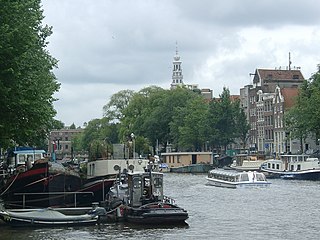Jacob Roggeveen was a Dutch explorer who was sent to find Terra Australis and Davis Land, but instead found Easter Island. Jacob Roggeveen also found Bora Bora and Maupiti of the Society Islands, as well as Samoa. He planned the expedition along with his brother Jan Roggeveen, who stayed in the Netherlands.

Johannes Camphuys was the Governor-General of the Dutch East Indies from 1684 to 1691. Camphuys was born in Haarlem, in the Republic of the United Netherlands.

Jan Cock Blomhoff was director ("opperhoofd") of Dejima, the Dutch trading colony in the harbour of Nagasaki, Japan, 1817–1824, succeeding Hendrik Doeff.

Diederik Durven was a Dutch colonial administrator and Governor-General of the Dutch East Indies from 1729 to 1732.

Johannes Thedens was Governor-General of the Dutch East Indies from 6 November 1741 until 28 May 1743.

VOC opperhoofden in Japan were the chief traders of the Dutch East India Company in Japan during the period of the Tokugawa shogunate, also known as the Edo period.
Ravesteyn, also written as Ravensteyn, Ravenstein or Ravestein, was a 18th-century East Indiaman of the Dutch East India Company.

Hendrick or Henricus Zwaardecroon was Governor-General of the Dutch East Indies from 1718 until 1725.

Renier van Tzum also known as Tzom or Reijnjer van't Zum,, was a merchant/trader and official of the Dutch East India Company.

Constanti(j)n Ranst de Jonge was a Dutch businessman employed by the Dutch East India Company (VOC) who was chief of the trading posts in Tonkin and Dutch Bengal and three times opperhoofd of Dejima in Japan.
Leopold Willem Ras (1760s–1823) was a Dutch merchant-trader and diplomat.

Roelof Diodati was a governor of Dutch Mauritius in the late 17th century.
The Schoonenberg, also spelled Schonenberg and Schonenbergh, was a trading ship operated by the VOC between 1717 and 1722. The ship, a Spiegelretourschip or Dutch East Indiaman, was damaged beyond repair in an accident at Struisbaai, South Africa on 20 November 1722, during a return voyage to the Netherlands from Batavia, and was later burned and destroyed. This happened on the second of two calamitous voyages; on the maiden sailing in 1720, 75 of the crew died when the ship ran out of water and food on the leg from Cape Town to Ceylon, before finally reaching the diversion port of Mocha after spending 6 months stranded in present-day Somalia.
Hofwegen was an 18th-century Dutch fluyt. Built in 1731 in Rotterdam, the ship entered the service of the Dutch East India Company (VOC). The ship is recorded as making several voyages the Dutch colony of Batavia in Indonesia. She made the majority of these voyages at the behest of the "Rotterdam Room", a collection of merchants from Rotterdam.

Candia was a ship of the Dutch East India Company which only once traveled for Asia in 1790 and never returned to the Netherlands.
Horssen was an East Indiaman operated by the Delft chamber of the Dutch East India Company. She was launched in 1784 and made the voyage to the Far East in 1786. She then had sailed for several nearby ports in Asia, when she finally set out for the successful return voyage in 1791, carrying aboard the prisoner Mary Bryant to Cape Town. After arriving in Europe in 1792 she was put out of service.
Constantia was launched in 1782 at the Delft Shipyard as an East Indiaman for the Delft Chamber of the Dutch East India Company (VOC). The British Royal Navy captured her in 1795 when the British occupied Malacca.

Dankbaarheid, also written as Dankbaarheit or Dankbaarheyt, was a 18th-century East Indiaman of the Dutch East India Company.
Midloo, also written as Midlo, was a 18th-century East Indiaman of the Dutch East India Company.










